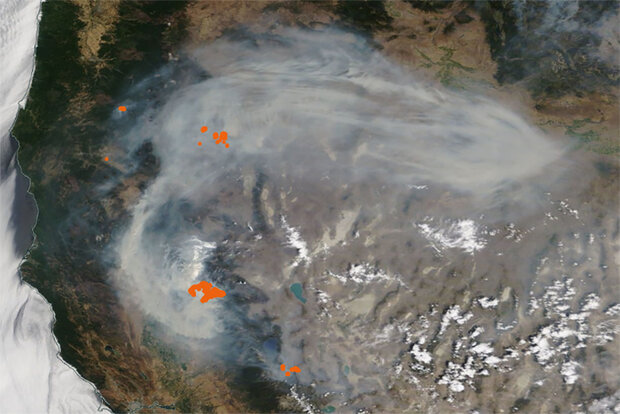Fires (marked in red-orange) spread thick smoke over the western United States on July 24, 2021. Credit: NASA Worldview
Smoke from fires has large air quality, health, and climate impacts. However, both the quantity of smoke and its ability to warm or cool the atmosphere remain poorly understood. By looking at differences in smoke emissions and how smoke absorbs sunlight, a new study supported by CPO’s Atmospheric Chemistry, Carbon Cycle, & Climate (AC4) program provides a better understanding of the air quality and climate effects of fires in the western United States and southern Africa. The study is led by MIT and published in JGR Atmospheres as an early online release.
Read more at the link below.
Related Content
NEWS & FEATURES
MAPS & DATA
TEACHING CLIMATE
02/26/2018
11/24/2015
